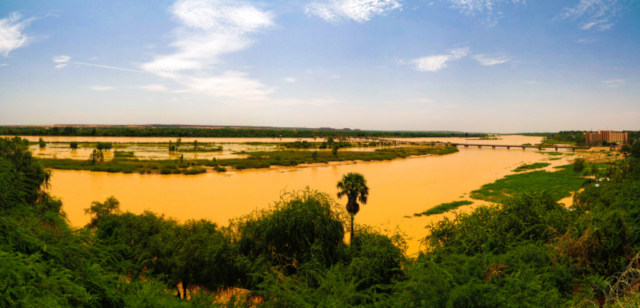Why does GWP work on Transboundary Water?
Transboundary water cooperation/management is critical to GWP’s mission to advance governance and management of water resources for sustainable and equitable development.
As water bodies cross over different political jurisdictions, it is challenging to identify commonly accepted solutions to satisfy competing uses. Governance of transboundary waters requires cooperation among countries, sectors and stakeholders.
Integrated Water Resources Management (IWRM) can be a useful instrument to fostering this cooperation. Using its strength as a network of a wide range of stakeholders, and being a knowledge partner in the field, GWP is uniquely positioned play a role as facilitator and promoter of sustainable transboundary water management.
What does GWP do?
With the aim to enhance cooperation and reduce conflict over transboundary waters, GWP works by building partnerships among all actors.
Enhancing cooperation at regional, local, basin, and aquifer levels
GWP works at various governance levels for improved transboundary water cooperation.
Through support to River Basin Organisations, Regional Economic Communities, International Legal Instruments (e.g., 1997 UN Water Convention, 1992 UNECE Water Convention) and other cross-border institutions, GWP promotes transboundary cooperation in Africa, Latin America, the Mediterranean, and Central and Eastern Europe.
This work includes facilitating water dialogues and management practices, establishment of transboundary water commissions, institutional mechanisms, climate adaptation, nexus assessment, basin IWRM plans and strategic action plans, public participation plans, stakeholder engagement plans and information management and exchange.
Facilitating regional dialogues
In contrast to dialogues around specific water bodies, regional dialogues can facilitate more open discussions on key aspects and issues related to transboundary waters. By focusing on solutions, these dialogues can assist in identifying entry points for cooperation. Regional dialogues constitute a series of events (conferences, workshops, study visits, seminars) focusing on policy and technical instruments to address transboundary water management, assisting in highlighting the benefits of cooperation, and leading to improved capacity for practitioners and stakeholders. Such dialogues can be built onto GWP’s existing work with regional economic commissions and institutions. Examples of such regional activities include the following:
- In GWP Mediterranean, regional dialogue on waters has enabled numerous basin-level interventions, including: Memorandum of Understanding (MoU) establishment and implementation (Drin Basin); nexus assessments (NWSAS, Drin and Drin Basins); enhancement of cooperation (NWSAS) and public participation plans (Sava River Basin).
- GWP West Africa has started a regional dialogue on transboundary aquifers with the Economic Community of Western African States (ECOWAS).
- GWP Central America has initiated a regional dialogue on transboundary water with the Central America Commission for Environment and Development.
Capacity building and south-south learning for better transboundary water governance:
GWP conducts regional capacity building for practitioners of transboundary water management in Africa, Latin America, and Asia. Key topics include: international water law and governance, water diplomacy, negotiation, and gender mainstreaming. A post-training survey showed 92% of the trainees from Latin America applied knowledge acquired from the programme in their work. Examples of policy influence by African trainees include their contributions to the development of the Volta Basin Charter, IGAD’s regional water resources use protocol, and Chad’s accession to the UNECE Water Convention.
In December 2018, a Pan-Asia training convened 26 participants from 17 countries across Asia, in Kunming China to learn about key transboundary water governance topics, and also exchange information by sharing case studies. These continental level trainings adopt the South-South learning approach, fostering relationships and networks among practitioners. Training was also replicated by some of the regional and local level organisations, and there is an interest to do this further.
Sustainable Development Goal (SDG) 6:
SDG 6.5 is particularly relevant for transboundary water governance, as indicator 6.5.1 focuses on the degree of IWRM implementation at all levels, including the transboundary level and 6.5.2 focuses on the proportion of transboundary basin area with an operational arrangement for water cooperation. Through GWP’s SDG 6 IWRM Support Programme, GWP facilitates a multi-stakeholder approach to SDG planning and monitoring.
In supporting SDG 6.5.1, GWP convened 36 national workshops in 2017-2018 to collect official country data, together with UN Environment-DHI, the custodian agency of SDG 6.5.1. In 2020, the GWP is organising 60+ country consultations worldwide to evaluate the degree of implementation of IWRM.
Photo: Niger River flows through Guinea, Mali, Niger, Benin and Nigeria in West Africa. By Mostphotos.com.

